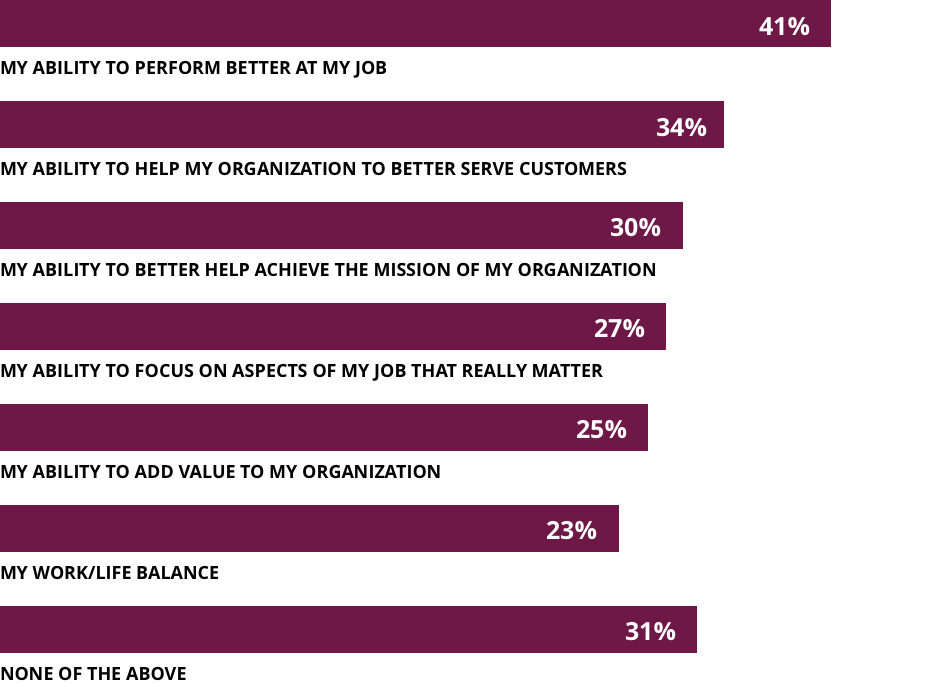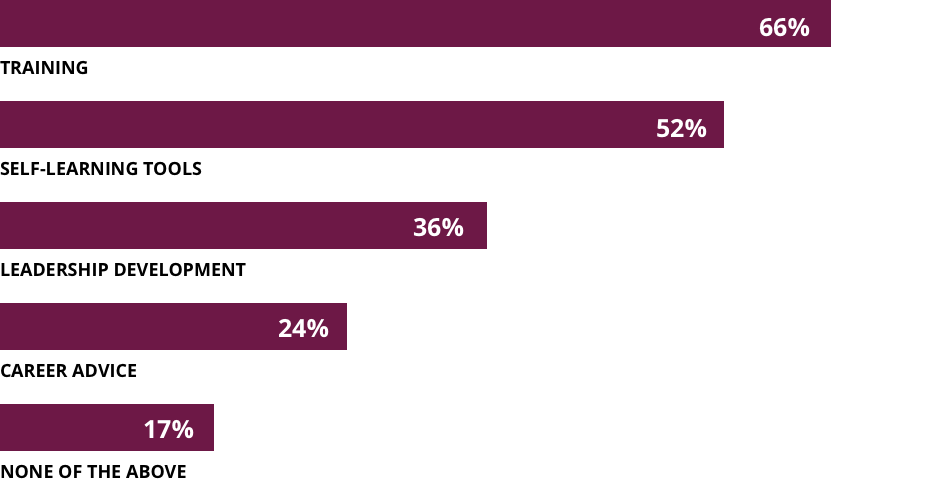Report
The missing factor sabotaging technology change in healthcare: Employee input

As healthcare organizations double down on technology amid the COVID-19 crisis, an Eagle Hill Consulting Survey shows that healthcare and pharmaceutical organizations have not been getting the most out of their technology investments because of a missing critical factor—employee input.
Technology—such as telehealth, digital epidemiology tools, chatbot helpers and remote work environments—has ramped up in response to the new realities of COVID-19. These efforts are critical to slow the spread of the virus, care for hundreds of thousands of patients, keep employees on the job and meet business objectives. Even before the pandemic, healthcare executives were turning to technologies like automation, robotics and artificial intelligence (AI) to reinvent how work is done. These technologies offer the promise of better health outcomes as well as greater speed, efficiency, accuracy—and bottom-line savings—in healthcare delivery and operations.
A lot is riding on the potential for technology advances to strengthen operational capabilities and deliver enhanced consumer experiences and healthcare outcomes. It comes at a price, however. As technology budgets have risen, leadership has been demanding strong returns. Investments will be under even greater scrutiny moving forward because of the impact of coronavirus on corporate earnings.
Technology advances before and after COVID-19 also come with a profound human impact. Automation and AI offer opportunities for employees to do very different—often more fulfilling—work. For many, this will require developing new skills and ways of working. Yet in what has been a historically tight healthcare labor market, hiring to get these skills is not an option. Upskilling current employees is a must. This kind of sweeping technology change is transforming the employee experience and the future of work in healthcare. And more of the same is ahead.
The Healthcare IT market was valued at $163.3 billion in 2018 and is expected to grow more than 15% annually (CAGR) through 2025.
Source: Global Market Insights
To get the most out of technology changes in healthcare, it is vital to seek perspectives from stakeholders whose voices on the issue are not usually heard: employees.
The Eagle Hill Technology in the Healthcare Workplace Survey of US healthcare employees reveals a gap in value between companies’ healthcare technology investments and how employees experience them. This means healthcare companies are not maximizing ROI from technology and automation updates. The reality is that technology alone is not a silver bullet. Its impact comes from what people do with technology to help fulfill a company’s mission. So getting the most from healthcare technology spend means that technology must work for and be understood by the employees using it.
Healthcare employees see a gap between healthcare technology investment and impact.
Employees intuitively understand that tech advances offer exciting possibilities. Yet as they see it, technology investments do not necessarily improve performance (Figure 1). While almost half report that their employer introduced a new technology in the last two years, only 29 percent say the company invests in the right technology to support them. Just 42 percent think technology change has had a positive impact on their organization.
Just 29% of healthcare workers say their company invests in the right technology to support them.
Figure 1: Healthcare employees are not overwhelmingly positive about how technology improves performance.
Q: At work, technology (automation, AI, robotics) has improved the following: Select all that apply.

Source: The Eagle Hill Consulting Federal Workplace Culture Survey 2020.
Healthcare employees find that support is in short supply.
The survey suggests that employees are not confident about technology change because they are not getting necessary support from their employer. Over three-fourths of healthcare workers say they need more skills to adapt to advancing technology. Yet only 44 percent report that their company gives them the right level of support to understand and benefit from new technology solutions. Training is the strongest area of support, while self-learning tools, leadership development and career advice are less so (Figure 2).
Only 44% of healthcare workers get the right level of support to benefit from new technology.
Figure 2: Healthcare employees are not getting all the support they need to respond to technology change.
Q: In which of the following areas is your employer providing you with the right support to respond to the changing requirements of work?

Source: The Eagle Hill Consulting Federal Workplace Culture Survey 2020.
Healthcare employees are not asked for their input.
The best way to give employees the right support when implementing healthcare technology is to ask them what they need. Yet employers are not communicating with employees about technology decisions. Less than 2 in 10 are asked for their input. A troubling 13 percent are completely unaware of technology changes in their company. For the outlier companies that do solicit employee feedback, they typically do it after a solution has been purchased. The lack of early feedback from the people actually using the solution can be disastrous.
Only 17% of healthcare workers are asked to give input to technology change.
How can you get the most from your healthcare technology investments?

Understand the problem. The real problem.
There is a false notion that ROI magically comes from the technology solution. But no technology will override outdated business process, broken cultures or skills gaps. And no technology will achieve business goals alone. This is why the key starting point is a root cause analysis to understand the real problem and business challenge that needs to be addressed. No amount of change management, inclusive of training and communications to engage employees, will achieve success without clarity on root cause issues.

Test your hypothesis.
The root cause analysis is not complete until employees have validated it. Business leaders often conduct root cause analysis of a business challenge in isolation of the people doing the work every day and miss vital insights. This is why working sessions, focus groups and scenario-based planning are key to validate the assumptions behind the analysis of what the real problems are—and what solutions can help. This does not mean getting caught in a group-think situation where everyone weighs in. It is simply a matter of connecting early with the right people to ensure that the analysis driving technology purchasing decisions makes sense from the frontline.

Know the human ROI.
Any organization can get to technical compliance with any solution. Yet few healthcare companies are considering the human factor and impact of a solution—from how technology change impacts people’s day-to-day experiences, skills and roles to what groundwork it lays for their career trajectories. As a key first step, executives should cascade their strategic vision down to leaders and managers to align all employees around why the technology change is important and what’s in it for them. Next, organizations can drive adoption more quickly by getting everyone involved. The best technology solutions get the most out of humans. Exploring the human factor is so important because when it comes to technology investments, organizational ROI depends on human ROI.

Assess tomorrow’s impacts today.
Part of planning the implementation of a new technology is thinking strategically about its impact on the current and future workforce. This sounds obvious, but it is an important assessment that companies often overlook. Before launch, leaders must know how the technology solution will change and augment the work being done and how it will impact skills and competencies from a training and hiring perspective. As rapidly as technology evolves today, this workforce of the future assessment has to be done often and with employee input.
Technology change has been advancing healthcare; COVID-19 is progressing that reality even more quickly. Companies cannot take full advantage of the exciting opportunities ahead unless their healthcare IT investments account for the impact on people.
Methodology
The Eagle Hill Consulting Technology in the Healthcare Workplace Survey 2020 was conducted online by Ipsos in January 2020. The online survey included 675 respondents from a random sample of healthcare industry employees across the United States. The survey polled respondents on aspects of the impact of technology (such as artificial intelligence, automation and robotics) on their current and future work environment.

